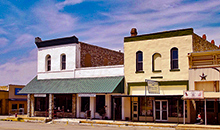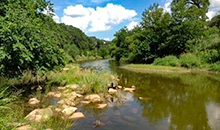Main Menu
Mills County Data
Mills County Communities & Places
Genealogy & History Links by USGHN
Important Mills County Addresses
Sponsors
Mills County Neighbors
Brown County, Texas
Comanche County, Texas
Hamilton County, Texas
Lampasas County, Texas
San Saba County, Texas
Other Websites
Welcome to Mills County Texas Genealogy & History Network!
Welcome to the Mills County, Texas Genealogy & History Network. Our purpose is to provide visitors with free resources for genealogical and historical research. To share your genealogy or history information, send an email to txghn@outlook.com and we will happily include it here. For other Texas Counties, visit the Texas Genealogy & History Network state website and go to the appropriate county. Thanks for visiting and good luck with your research! |
|
About Mills County, Texas...

Mills County is in central Texas, approximately 110 miles northwest of Austin. The county lies partly in the Grand Prairie region and partly in the western Cross Timbers region. The county was named for John T. Mills. A range of hills, the Cowhouse Mountains, extends from southeast to northwest, and picturesque San Saba peak (1,712 feet), covered by cedars and large white rocks, is a local landmark. Fishing and hunting support a tourist industry on the Colorado River.
In earlier times the region was a hunting ground for Apaches and Comanches, who fought over it until the mid-nineteenth century. The first white traveler here was probably Capt. Henry S. Brown, who led a party across the Colorado River in 1828 to recover stock stolen by Indians. The first permanent settler, Dick Jenkins, established himself in the area in 1852. A Methodist circuit rider held the first religious service in the cabin of Charles Mullin in 1857. The first settlers, like the Indians, subsisted primarily on hunting. A  number of the early settlers were German immigrants.
number of the early settlers were German immigrants.
Life on the frontier was often precarious; Dick Jenkins and several other early pioneers were killed by Indians. In 1858 Mr. and Mrs. Mose Jackson and two of their children were killed by Indians at Jackson Springs, while two other children were carried into captivity. After a force of settlers routed the Indians at Salt Gap, their pursuers and a company of Texas Rangers recovered the captive Jackson children. In 1862 a band of twenty Comanches raiding for horses was pursued by settlers to the mouth of Pecan Bayou and put to flight after three Indians and one white, O. F. Lindsey, were killed. After Indians killed John Morris, a rancher, settlers pursued them and killed or wounded seven of the twenty-seven raiders. Few of the settlers joined the Confederate Army during the Civil War because their own frontier required protection against the depredations of Indians and outlaws.
 During the Civil War and for decades thereafter whites caused settlers more trouble than Indians, as cattle rustlers, horse thieves, murderers, army deserters, and other rogues infested the area. Vigilante committees were formed to deal with criminals, but then these groups degenerated into warring mobs committing criminal acts themselves. A reign of terror followed conflicts between vigilante groups, which broke out in Williams Ranch in 1869. Vigilantes drove out some bad characters, but killed other innocent men; lynchings and assassinations became commonplace. The turbulence lasted until 1897, when the Texas Rangers finally broke up a group of vigilantes who frequently gathered at Buzzard Roost.
During the Civil War and for decades thereafter whites caused settlers more trouble than Indians, as cattle rustlers, horse thieves, murderers, army deserters, and other rogues infested the area. Vigilante committees were formed to deal with criminals, but then these groups degenerated into warring mobs committing criminal acts themselves. A reign of terror followed conflicts between vigilante groups, which broke out in Williams Ranch in 1869. Vigilantes drove out some bad characters, but killed other innocent men; lynchings and assassinations became commonplace. The turbulence lasted until 1897, when the Texas Rangers finally broke up a group of vigilantes who frequently gathered at Buzzard Roost.
In 1887 the Texas state legislature carved Mills County from lands formerly assigned to Brown, Comanche, Hamilton, and Lampasas counties. Goldthwaite became the county seat. By 1890 the area's  agricultural economy was already fairly well-established. The county had 680 farms and ranches, encompassing 142,299 acres, that year. Ranching was an important part of county life, with almost 25,000 cattle and 23,000 sheep were reported. Crop farming was also well-established in the county by this time. Cotton had first been planted in the area in 1864. After 1890 cotton became increasingly important and soon supplanted cattle as the county's leading industry. Almost 22,000 acres were planted in cotton in 1900 and almost 46,000 in 1910. By that time there were 1,484 farms in Mills County.
agricultural economy was already fairly well-established. The county had 680 farms and ranches, encompassing 142,299 acres, that year. Ranching was an important part of county life, with almost 25,000 cattle and 23,000 sheep were reported. Crop farming was also well-established in the county by this time. Cotton had first been planted in the area in 1864. After 1890 cotton became increasingly important and soon supplanted cattle as the county's leading industry. Almost 22,000 acres were planted in cotton in 1900 and almost 46,000 in 1910. By that time there were 1,484 farms in Mills County.
The area's economy was hit hard during the Great Depression of the 1930s, although federal relief projects helped to offset some of the worst effects. The decline of cotton farming in the area continued during the 1940s and 1950s. Land once tilled was turned over to pasturage for increasing numbers of mohair goats and sheep. In 1982 oil was discovered in the county, and 28,122 barrels were produced; by 1990, however, production had ceased altogether.
 The county has a total area of 750 square miles, of which 748 square miles is land and 2 square miles (0.2%) is water. The population recorded in the 1890 Federal Census was 5,493. The population peaked in 1910 at 9,694. The 2010 census recorded 4,936 residents in the county.
The county has a total area of 750 square miles, of which 748 square miles is land and 2 square miles (0.2%) is water. The population recorded in the 1890 Federal Census was 5,493. The population peaked in 1910 at 9,694. The 2010 census recorded 4,936 residents in the county.
Neighboring counties are Comanche County (north), Hamilton County (northeast), Lampasas County (southeast), San Saba County (southwest), and Brown County (northwest). The county seat is Goldthwaite. Other communities in the county include Bozar, Democrat, Mullin, Priddy, and Star.
Mills County, Texas Records
Birth Records - The Texas Department of State Health Services has records from 1903 to present. Records for the last 75 years considered private and will only be provided to certain individuals. To obtain current information on who may obtain a record, how to submit a request and an official request form, see the Texas Department of State Health Services website or write to Texas Vital Records, Department of State Health Services, P.O. Box 12040, Austin, TX 78711-2040.
For older birth records you will have to write to the County Clerk of the applicable county. The existence of birth records prior to 1903 will vary widely from county to county. Local historical societies and genealogy collections in local libraries may be able to provide some information.
Death Records - The Texas Department of State Health Services has records from 1903 to present. Records for the last 25 years considered private and will only be provided to certain individuals. To obtain current information on who may obtain a record, how to submit a request and an official request form, see the Texas Department of State Health Services website or write to Texas Vital Records, Department of State Health Services, P.O. Box 12040, Austin, TX 78711-2040.
Marriage Records - The Texas Department of State Health Services can provide a verification letter of marriage for Texas marriages from 1966 to present. This is NOT a marriage license. To obtain a certified copy of a marriage license you must contact the County or District Clerk in the county or district where the marriage took place.
Local historical societies and genealogy collections in local libraries may be able to provide some information.
Divorce Records - The Texas Department of State Health Services can provide a verification letter of divorce for Texas divorces from 1968 to present. This is NOT a copy of the divorce decree. To obtain a certified copy of a copy of the divorce decree you must contact the County or District Clerk in the county or district where the divorce took place.
Local historical societies and genealogy collections in local libraries may be able to provide some information.




